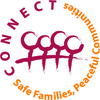15 Ways You Can Help Transform Intimate Partner Violence, Part 1

Intimate partner violence (IPV) is prevalent and pervasive. It does not discriminate and affects all aspects and members of society. In honor of CONNECT’s 15th anniversary, we offer 15 ways YOU can make help us transform the culture of intimate partner violence. This is the first of a three-part series. Each part contains five ways you can help.
1. Educate yourself about IPV—it occurs in various ways, in all settings, and among all demographics and types of relationships. You’ve already made the first step by visiting us at www.connectnyc.org. We welcome you to explore our site, read our blog, and visit our “Resources” page to learn more about the various forms of IPV and the ways it impacts society. We invite you to attend our trainings and programs. Feel free to reach out if you have any questions or would like to RSVP to an event.
2. Believe and listen to survivors — do not judge or victim blame. Recognize that reaching out for help and stepping across the boundary of shame and fear is challenging for survivors. Acknowledge the courage it takes to disclose abuse. Say “I believe you,” mean it and show it. Survivors are often confronted with directives masked as well-intentioned advice (i.e. “You should…”) or with various forms of minimizing, rationalizing, justification and/or denial that mimic their abusers’ behaviors. Listening without judgment, with compassion, and with an attitude of humility and respect can go a long way in a survivor’s journey to healing. Asking questions, such as “What do you need?” and “Do you feel safe?” and letting the person know you are there for them when they’re ready to talk, communicate much-needed support and care.
3. Approach the conversation with open-ended questions and, most importantly, an open mind. Since every IPV situation is unique, how we show up to the conversation matters. Many myths and stereotypes still exist about who gets abused, who abuses and why it happens. Therefore, having an open mind is crucial. The truth is each situation is unique, and shaped by different realities ranging from histories, traumas, lack of resources, support, and many other factors. We often project our own ideas and experiences onto abuse victims and their abusers. We assume that if one person we know was able to leave, get help and move on without difficulty, it must be easy for everyone. That is oftentimes not the case. Every survivor is affected differently and every survivor’s story is different. This is why it is so important to allow them to tell their story.
4. Partner with men and boys to prevent violence and abuse in intimate relationships. While anyone can be abusive and/ or abused, and LGBTQ and heterosexual rates of DV are reaching equal status, the vast majority of instances of violence, including IPV, are perpetrated by men. Teaching men, and especially boys, to recognize and correct traumatic and trauma-inducing behavior in favor of embracing healthy patterns and relationships is a key to ending patterns of violence. Modeling healthy behaviors and relationships for them is critical, too.
5. CONNECT the dots. IPV is part of the continuum of violence that people experience in families, schools, workplaces and communities across the life span. If ignored, IPV will continue to occur. The parent, relative or partner who is abusive; the classmate or teacher who belittles or shows physical and verbal aggression. The coworker who uses threatening language or touches without provocation. The person who picks fights in public with strangers. The commonality in each scenario is that each is rooted in power and control. Without the vigilance and help of the community, these behaviors and patterns are given liberty to become a vicious cycle, with potentially fatal repercussions. Let’s break the cycle—together.
Let’s stay CONNECTed! Follow us on social media (Facebook, Twitter, and Instagram); spread the word by sharing this post; donate today and/or lead a fundraiser!
